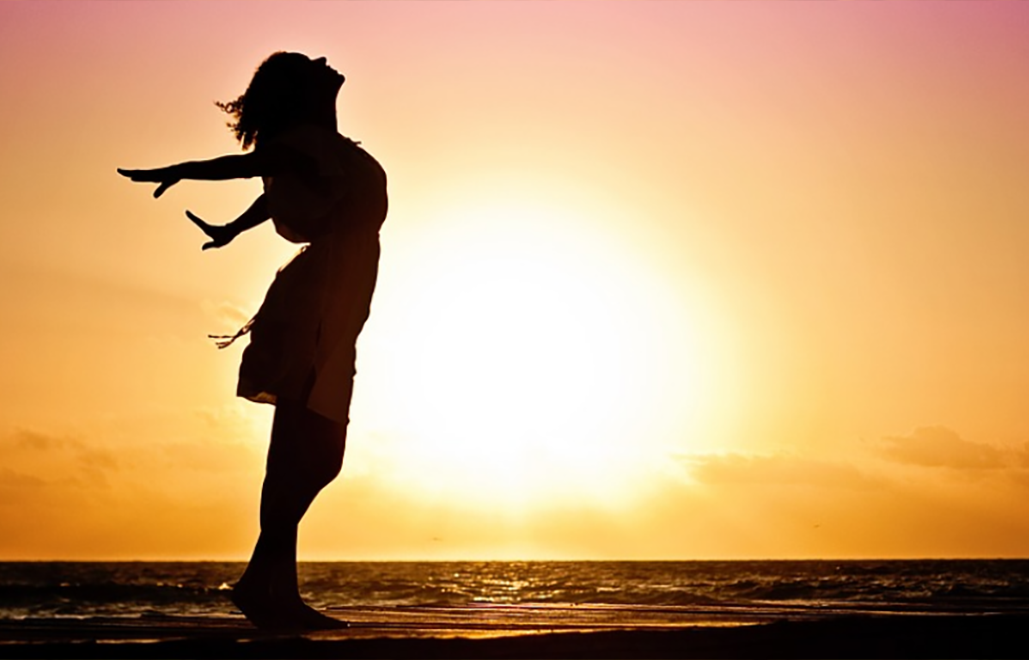Les pranayamas
"Prana" is breath or "life energy"
"yama" is control
The pranayamas allow control of the breath: energy that keeps us alive. They correspond in Patanjali's Yoga Sutras to the fourth limb of Yoga.
These rigorous techniques must be performed in a meditative posture. They include long retentions and slow breaths. Thus, the breathing practiced will be called complete or deep breathing. It is broken down into 4 beats:
- The inhalation where the air fills the lungs from the bottom up;
- A suspension time of a few seconds once the lungs are filled with air;
- The exhalation starting from the top of the lungs to the bottom;
- A suspension time of a few seconds once the lungs are emptied of air.
Effects of a daily practice:
The daily practice of pranayamas allows the stimulation of the lymphatic system and the evacuation of toxins;A better oxygenation of the muscles and the brain; A decrease of the cardiac rhythm, of the arterial and blood pressure.
Allows to limit one's anxiety, one's anguish, one's stress; but also to reduce muscular contractures.
This practice allows one to become aware of one's breathing, and to be in the present while being present to one's own body.
Some examples
Alternating breathing (Nadi Shodhana)
This involves breathing alternately through one nostril and then the other using the right hand placed in front of one's face. The index and middle fingers are placed on the 3rd eye.
The right nostril is plugged with the thumb of the right hand, and one inhales through the left. After a short retention of breath, the left nostril is plugged with the phone book and one exhales through the right. Then after a short retention of the breath, one inhales by the right. one closes the right and exhales by the left....
This practice balances the two nadis Ida and Pingala, the sympathetic and para-sympathetic nervous system .
Complete Yogic Breathing
Lie down in Savasana. Become aware of your natural breath for a few minutes. Then place your hands on your belly and begin diaphragmatic breathing. Your belly expands as you breathe in and deflates as you breathe out.
Begin rib breathing by expanding your ribs without tension.
Then move to clavicular breathing. Breathe in with your upper chest. Your rib cage opens and closes.
Exhale slowly starting at the collarbones, continue at the rib cage, and relax the abdomen. Practice for 5 to 10 cycles. One cycle is all of these breaths.
This exercise allows you to breathe better on a daily basis, build up your diaphragm and abdominal muscles, and reduce neck tension.
Ujjayi- Breathing- The "Warrior's Breath"
Ujjayi means "victorious" in Sanskrit. This ancient breathing technique has been nicknamed "ocean breathing" because of the sound the throat makes on exhalation, which resembles the rolling of the waves. It is compulsorily used during the practice of Ashtanga and Vinyasa Yoga.
To perform this pranayama, inhale and exhale only through the nose creating a hoarse sound from the throat. Try to "close" your throat. Also, the inhalation and exhalation should be of equal length, calm and strong. The breathing should be done through the ribs starting from the solar plexus. It should not be done through the belly because the belly should remain contracted.
Kapâlabhâti breathing
allows a kind of mental cleansing by emptying oneself of the negative thoughts and stress that accumulate daily.
Only the exhalation is worked here. The exhalation is very active while the inhalation is passive.
The idea is to execute a succession of powerful and rapid exhalations. By retracting your belly. all at once, this causes the exhalation.
It will be necessary to take care for the beginners not to make it too quickly and on a too long duration to avoid having the head turning. The breath should not be forced.
Shîtalî breathing
For this breathing the inhalation is done through the tongue extended and placed like a tube, between the rounded lips. The exhalation is done through the nose. Inhale for 4 seconds by "inflating" the belly, then pull the tongue in and hold your breath full lungs for 8, 12 or 16 seconds. Exhale through the nose for 8 seconds emptying the belly.
This breathing calms the mind, eases anxiety, and releases tension. It refreshes the body; and is particularly conducive to concentration and meditation techniques.
Samavritti Breathing
consists of equalizing the 4 breathing beats: inhalation, holding the breath with full lungs,exhalation, and holding the breath with empty lungs will be done over an equal number of seconds. The minimum rhythm is 5 seconds.


 de
de 
